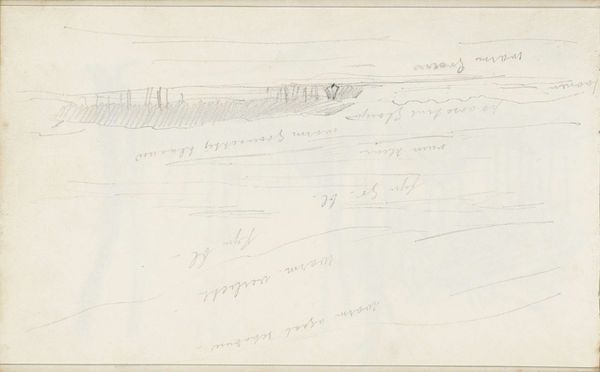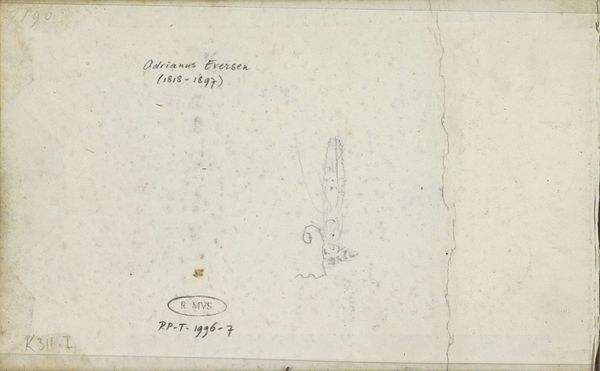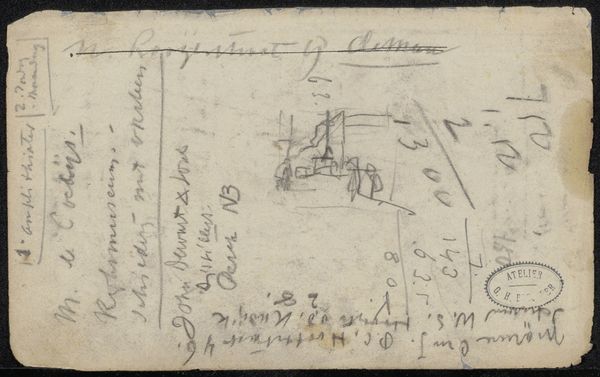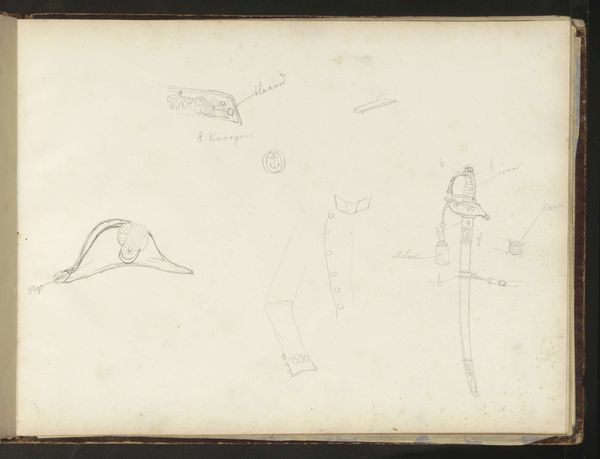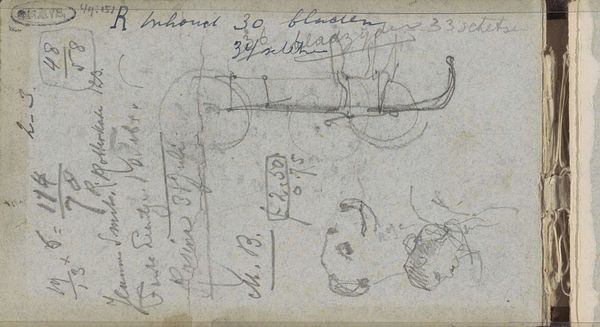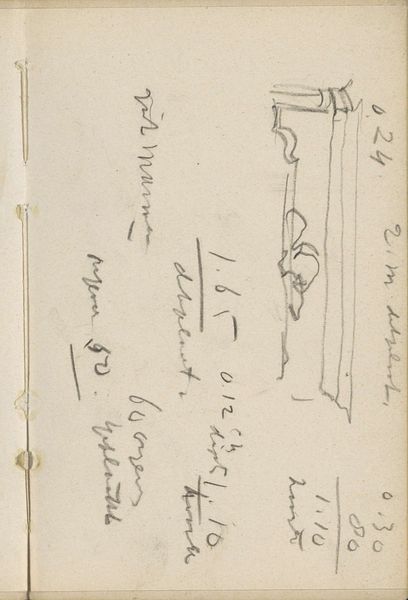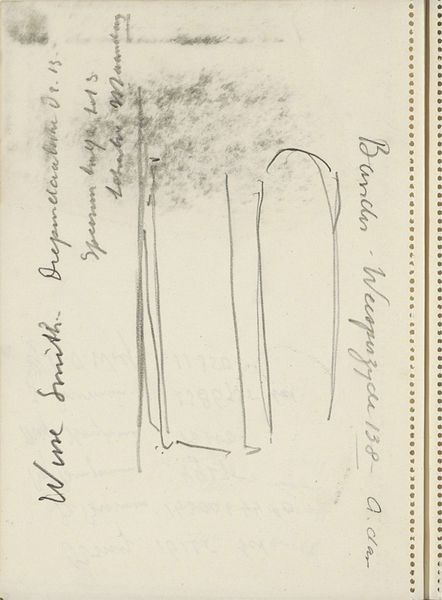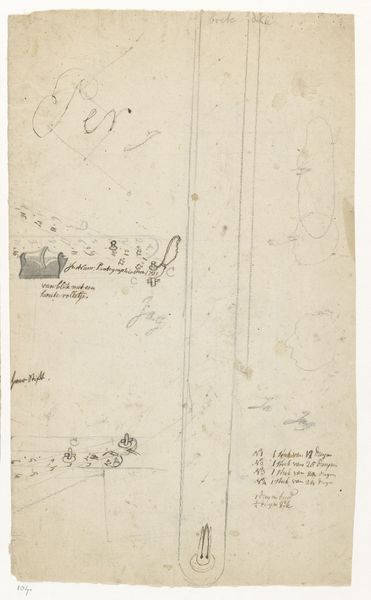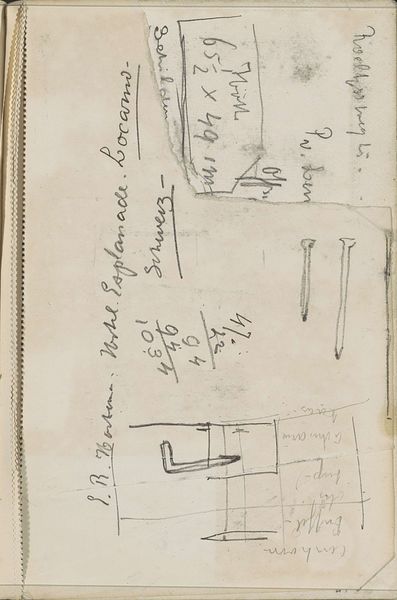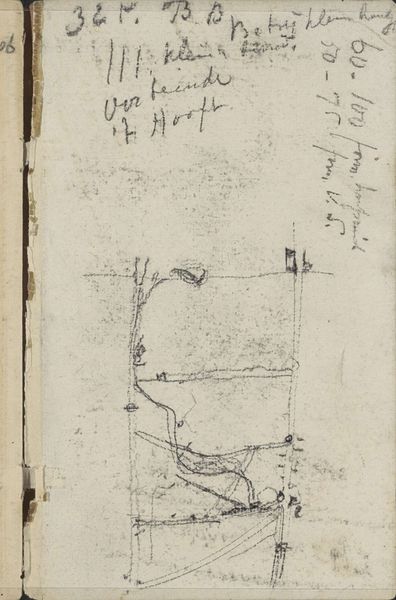
#
aged paper
#
toned paper
#
light pencil work
#
quirky sketch
#
hand drawn type
#
personal sketchbook
#
idea generation sketch
#
ink colored
#
sketchbook drawing
#
sketchbook art
Copyright: Rijks Museum: Open Domain
Curator: So, here we have George Hendrik Breitner’s "Studieblad," dating from around 1871-1876, housed right here in the Rijksmuseum. It appears to be a sketchbook page, rendered with light pencil work on aged paper. Editor: Yes, that's right! My first thought is just how simple it is. It’s so minimal, almost ephemeral. What strikes you when you look at this sketch? Curator: The directness. There's no pretense here. Breitner uses the sketchbook, this readily available and relatively inexpensive material, almost as a laboratory. Look at the hasty inscription, the rapid linework...it emphasizes the means of artistic production, turning away from established fine art practice. Does that provisionality challenge how we valorize a finished, framed oil painting over something like this? Editor: It does. I never really thought of sketchbooks as having this much value, especially displayed here in a museum setting. Does the subject matter affect that, too? Curator: In a way. It’s easy to overlook them. He seems to be noting measurements of objects, not producing an idealized depiction. I would argue it’s because it reflects artistic labor, its immediate engagement with materiality that many people might not consider “art.” What impact do you think the use of inexpensive paper has on our appreciation? Would this hold the same intrigue if it were on vellum? Editor: I guess I would assume a vellum sketch to be “more important.” Seeing it this way, though, I notice the everyday context more. It gives a great sense of immediacy to Breitner’s process. I'll have to rethink how I engage with simple pencil drawings from now on. Curator: Exactly. We see the social implications of cheap materials, the ability of a working artist to quickly explore ideas using what’s at hand, moving beyond bourgeois demands for idealized portraiture.
Comments
No comments
Be the first to comment and join the conversation on the ultimate creative platform.
